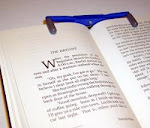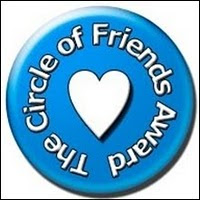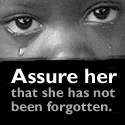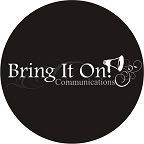Many Christians today have some difficulty understanding how to really follow Christ with passion and love for their fellow man. ‘Chasing Francis ’ by Ian Morgan Cron, is a novel that is part travelogue and part history lesson; its main focus is on one of the greatest Jesus followers who ever lived, Francis of Assisi.
’ by Ian Morgan Cron, is a novel that is part travelogue and part history lesson; its main focus is on one of the greatest Jesus followers who ever lived, Francis of Assisi.
Here is the synopsis of ‘Chasing Francis ’ from the back cover:
’ from the back cover:
Chase Falson has lost his faith – and he did it right in front of the congregation at his megachurch. Now the elders want him to take some time away: far away. So Chase crosses the Atlantic to visit his uncle, a Franciscan priest, where he encounters the teachings of Francis of Assisi and rediscovers his ancient faith.
In this engaging, history-rich novel, you will journey with Chase in the footsteps of Francis, a journey in the footsteps of Francis, and then begin one of your own through the pilgrim’s guide included in this book. Come discover Francis, the first postmodern Christian.
In the opening scene, Chase is on a jet headed to Florence, Italy. He describes himself as he saw himself two years prior to that time:
Two years earlier I’d been Chase Falson, founding pastor of the largest contemporary evangelical church in New England. My fourteen years in the ministry were a church-growth success story. I’d considered myself one of the privileged few the heavens had endowed with a perfectly true compass. I’d known who I was and where I was going, and I’d been certain that one day I would see the boxes checked neatly checked off next to each of my life goals. I’d liked myself. A lot. (p. 13)
He goes on to explain what had just happened to him:
That world had detonated ten days ago. Gazing down on the terracotta roofs dotting the approaching Tuscan hills, I found myself on a forced leave of absence, and chances were good that when I returned home I would be out of a job.
I had discovered that reaching the climax of a spiritual crisis in front of a thousand people is less than political. In retrospect, I should have realized that I was standing on the edge of a yawning existential abyss. Underground streams of doubt has been leeching into the well of my most deeply held beliefs for two years. The scaffolding that supported my whole system of belief was shaking as if some unseen force were trying to pull me down. (p. 15)
Chase explains his mindset of late with regard to his Christian belief system:
I’d been shocked a few years ago when a friend from seminary converted to Catholicism because he felt evangelicals had “McDonaldized” Jesus. I was starting to see his point.
(p. 17)
After the church leadership decided he needed to take some time off, Chase decided, on a whim, to go visit his Uncle Kenny, who divided his time between friaries in Assisi and Rome. Kenny had decided that Chase needed to ‘meet’ Francis; he described Francis this way:
“Francis was crazy enough to live more like Jesus than anyone else in history, and it changed the world. People still call him ‘the last Christian.’” (p. 41)
Kenny explains to Chase that he needs to go on a pilgrimage:
“Think of it this way,” he continued, “a pilgrimage is a way of praying with your feet. You go on a pilgrimage because you know there’s something missing inside your soul, and the only way you can find it is to go to sacred places, places where God made himself known to others. In sacred places, something gets done to you that you’re unable to do for yourself.” (p. 42)
Ultimately, Kenny was persuasive, and they were on their way.
In one of Chase’s journal entries, he compares the church of Francis’ day with the current day:
Another similarity between the Middle Ages and today has to do with the state of Christendom. In Francis’s day, the church was hemorrhaging credibility; it was seen as hypocritical, untrustworthy, and irrelevant. Some people even wondered if it would survive. Clergy was at the center of all kinds of sexual scandals. It had commercialized Jesus, selling pardons, ecclesiastical offices, and relics. Sermons were either so academic that people couldn’t understand them or they were canned. Popular songs ridiculing the church and clergy could be heard all over Europe. The laity felt used by the professional clergy, as if they were there to serve the institution, not the other way around. The church had become dangerously entangled in the world of power politics and war. Some fringe groups were beginning to say you couldn’t be a Catholic and a Christian at the same time. Disillusionment with the church inspired many people to turn to astrologers and other alternative spiritualities. (pp. 45-46)
Does that sound familiar?!
Chase shared what he learned about Francis from his uncle and from the many books he’d been assigned to read:
Francis was a nutcase, but there’s something so genuine about him that it’s hard not to like him. He wanted to become a knight and fight in the regional wars that often broke out between Assisi and the neighboring town… In a war with Perugia, Francis was taken prisoner and spent a year in prison waiting for dad to pay a ransom for his release. After he returned home, Francis was ill but refused to give up his dream of seeking glory as a knight – he signed up to go into battle again… The night before the battle, Francis had a dream that changed his life. He heard a voice say, “Who can do more good for you? The lord or the servant?” Perplexed, Francis replied, “The lord.” The voice in his dream responded, “Then why are you abandoning the lord for the servant?” In a flash, Francis figured out who was speaking and said, “O Lord, what do you want me to do?” And the voice said, “Return to Assisi, and what you are to do next will be revealed to you.” (p. 50)
Kenny and Chase had numerous discussions about Francis. Kenny defined him this way:
“…Francis was a Catholic, an evangelical street preacher, a radical social activist, a contemplative who devoted hours to prayer, a mystic who had direct encounters with God, and someone who worshiped with all the enthusiasm and spontaneity of a Pentecostal. He was a wonderful integration of all the theological streams we have today.” (p. 55)
One of Kenny’s colleagues was Brother Thomas. Thomas shared with Chase what needed to happen in order to minister to others:
“Everywhere I go, I meet people, old and young, from all over the world, and they tell me about their lives, their relationships, broken families, their addictions, shame, guilt, failures. You’ll never be able to speak into their souls unless you speak the truth about your own wounds. You need to tell them what our Lord has come to mean to you in the midst of your disappointments and losses. All ministry begins at the ragged edges of our own pain.” (p. 67)
Another colleague of Kenny, Peter, shared that Francis was a strong environmentalist. Peter drew this conclusion about how Christians dealt with the earth today:
“It’s sad that we’ve made this into just a political issue when, in fact, it’s theological as well,” Peter added. “If we continue allowing the earth to be destroyed, we’re actually working against the purposes of Jesus, who died for us.” (p. 79)
In addition to taking better care of God’s creation, this book also addresses the idea that art in all its forms – music, poetry, painting, etc... - should be embraced by the church. The same goes for embracing peace instead of war. A nun by the name of Irene, who was a key player in a peace conference attended by Chase, shared this insight about how Francis looked at peace:
“While you are proclaiming peace with your lips, be careful to have it even more fully in your heart. Nobody should ever be roused to wrath or insult by your account. Everyone should rather be moved to peace, goodwill, and mercy because of your restraint. For we have been called to the purpose of healing the wounded, binding up those who are bruised, and reclaiming the erring.” (p. 133)
In his journal entry, Chase wrote to Francis and praised his interpretation – and action –when it comes to Jesus’ teachings:
Francis, your genius was that you read stuff in the Bible (like the Sermon on the Mount) and you didn’t spiritualize or theologize it. You heard Jesus say, “Happy are the peacemakers,” so you got up every day and embarked on a new peace mission. My usual approach is to read the Bible, try to understand what he’s saying, and then apply it. Your formula was the reverse. You applied the Bible and then came to a fresh understanding of what it actually meant. What a concept. (p. 137)
The time came for Chase to return stateside and meet with the elders. I will not give away the result, but suffice to say that Chase Falson would never be the same after his encounter with Francis, who knew and understood the real Jesus - as opposed to the manufactured version - so very well.
Here is the biography of the author from his Facebook page and from the book’s back cover:
Ian Morgan Cron is senior pastor of Trinity Church in Greenwich, Connecticut, and is an ordained Anglican priest. He resides in Old Greenwich, Connecticut with his wife, Anne, and three children, Cailey, Maddie, and Aidan
According to his Facebook page, he and his family will be moving to Franklin, Tennessee, this summer.
I enjoyed this book, and learned a lot about Francis of Assisi. Having grown up in the Roman Catholic Church, I was somewhat familiar with him; I was familiar with his love of animals more than anything! But I am interested in learning more about him now. Pastor Cron provides a Bibliography at the back of the book – a great resource for Francis information, as well as a very in-depth Study Guide – ‘Further Reflections for the Pilgrim’s Journey.’ I would highly recommend this to believers and non-believers alike who want to have a strong role model for how to live like Jesus in a tangible and practical way.
You can order this book here .
.
This book was provided by NavPress for review purposes.





























.jpg)







No comments:
Post a Comment